Related Content
Content
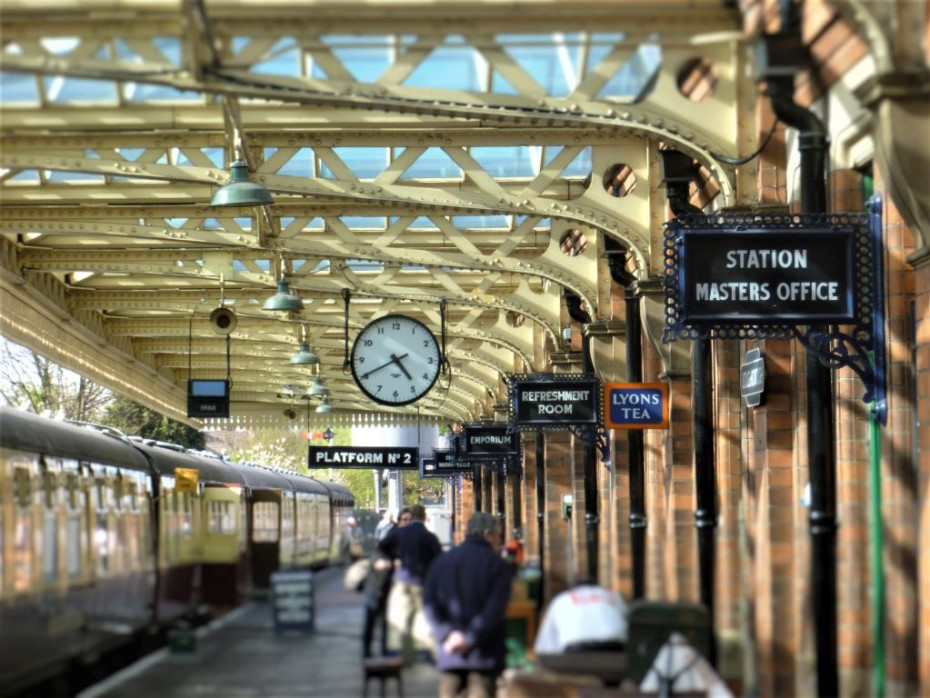
Travel to The Crown's filming locations by train
The hit Netflix TV series The Crown had to use the best of Britain as filming locations, many of which can be easily accessed by contemporary trains.
Share
Visiting film and TV locations can be a fabulous reason for taking a train journey.
The producers of the hit TV series The Crown weren’t ever going to be granted permission to film at the royal residences, so have had to be ingenious in their selection of alternative houses, gardens and parks.
With The Royal Family having access to the finer things in life, the aura of authenticity required for The Crown’s substitute locations, has led to a litany of some of Britain’s most fabulous interiors and landscapes, being showcased in the TV series.
So whether you have been an avid viewer or not, this guide to how visit the filming locations used in The Crown by train, is also a default guide to how to see the best of Britain by rail.
To the railway locations in The Crown
Britain’s royal family has had a close affinity with train travel since the earliest days of the railways. Queen Victoria may have had reservations about travelling across her realm at more than 30 miles per hour, but she was likely grateful that she could be conveyed in style to her residences outside of London.
Since 1897 British monarchs have been provided with a dedicated royal train, so it was inevitable that scenes of rail travel were featured in The Crown.
They're particularly common in the first two series, when Queen Elizabeth II, as portrayed by Claire Foy, was able to use the Royal Train for direct journeys to the royal residences at Sandringham in Norfolk and Balmoral in Scotland.
The West Highland Railway

Though for the journeys to Balmoral the program makers had to be especially creative and substitute an entire railway line.
That's because the series two scenes in both episode five and episode ten feature the epic West Highland Railway, instead of what would have been The Royal Train's actual route.
In episode five the train is pictured crossing its glorious Glenfinnan Viaduct, which Harry Potter fans will also recognize as the route of the Hogwart’s Express.
A journey by The Jacobite steam train provides a very similar experience to what's seen on screen, with trains from Glasgow providing an easy connection at Fort William station.
The Great Central Railway
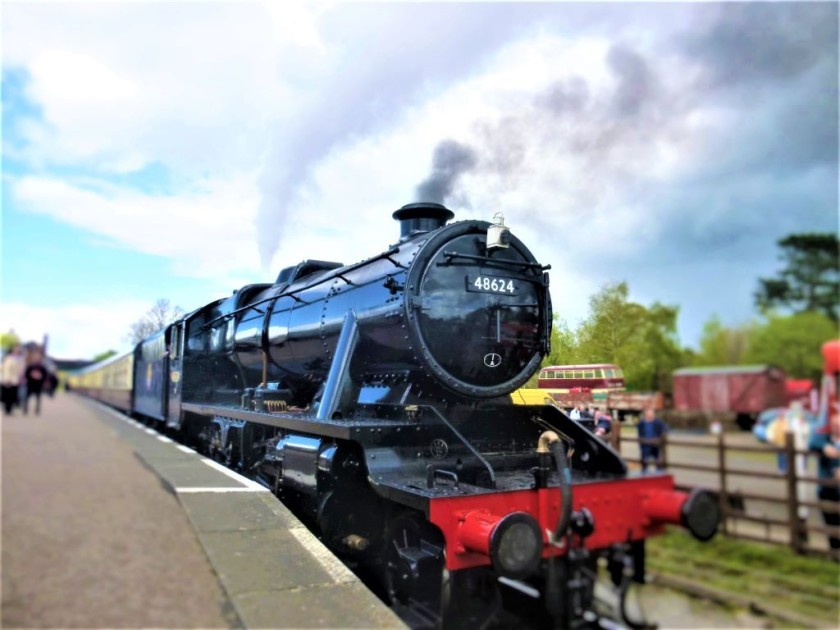
One of most memorable railway scenes in The Crown occurs in the very first episode, in which people gather to wave greetings at The Royal Train as it conveys The Royal Family to Sandringham for Christmas.
This journey, along with the interior scenes in which Claire Foy travelled by train, were filmed on the Great Central Railway in Leicestershire.
This preserved steam railway was saved by its army of volunteers to showcase the experience of taking an express train across England in the 1950s.
Therefore The Crown’s viewers and anybody else with a nostalgic affection for railways, can take the same journeys as shown on screen and experience the atmosphere of the beautifully preserved stations.
The railway's main station in the town of Loughborough, which is pictured at the top of the page, was also featured in series two, episode three, as a substitute for the closest railway station to the Sandringham Estate.
Lougborough's other station, can be easily accessed by contemporary trains, East Midlands Trains pro
St Pancras station
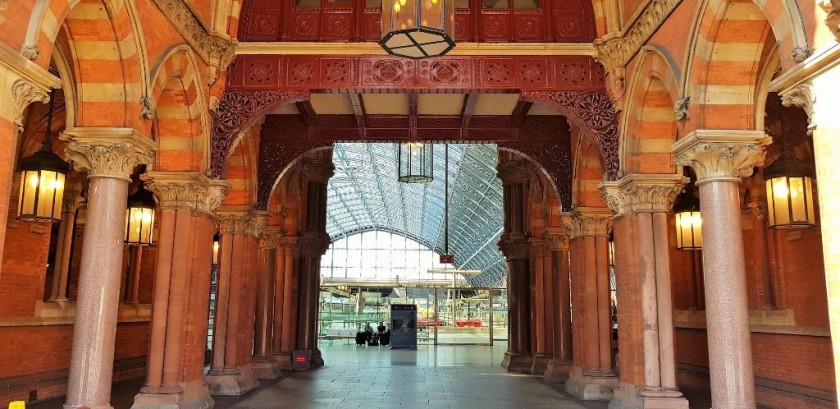
The eternally beautiful St Pancras station, with its unchanged façade, makes an appearance in episode six of series two, when the Duke of Windsor walks through this arch pictured above, when he arrives in London from his home in Paris.
To the Scottish filming locations by train (and bus)
The longest regular journey taken by The Royal Train was the annual return trip between London and Ballater, the closest station to the Queen’s summer residence at Balmoral.
That railway to Ballater was closed more than 50 years ago, but Ardverikie Estate, which substitutes for Balmoral in The Crown, is located within five miles of the glorious Highland Main Line, the main railway route to the north of Scotland.
For those who want to fully immerse themselves in The Crown experience, it’s possible to stay at Ardverikie, though the interior scenes set at Balmoral were filmed elsewhere.
The area around Pitlochry
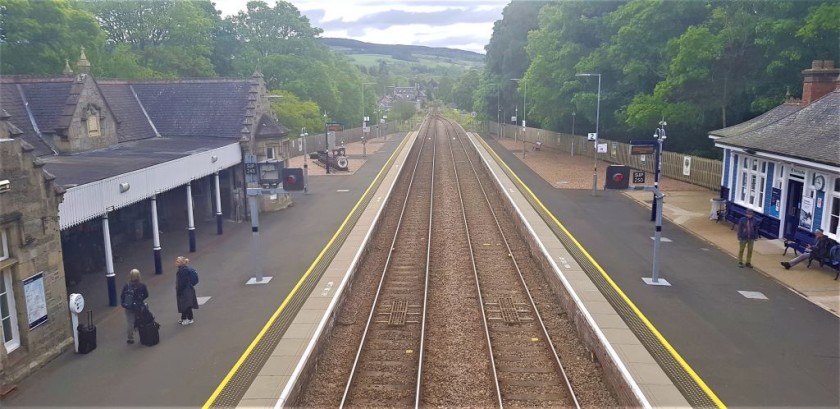
Charming Pitlochry is the nearest town to both Ardverikie and the beautiful Kinloch Laggan, which is the on screen location for the activities which would have taken place within the landscape of The Balmoral Estate.
Pitlochry station has trains from both Edinburgh and Glasgow which have a journey time of under two hours.
It’s also possible to reach Pitlochry during the day from London on the daily train evocatively named ‘The Highland Chieftain, which departs from King’s Cross station at noon on its beautiful journey along the East Coast mainline.
Or you can travel overnight to this gateway to The Highlands on The Caledonian Sleeper, which makes a nightly journey from Euston station in London to Pitlochry.
The area around Wick
Those day and night trains from London, as well as the trains from Edinburgh and Glasgow continue beyond Pitlochry to Inverness, where connections can be made with trains which travel along the beautiful Far North Line to Wick, which is romantically located at the furthest distance from London on the UK rail network.
Filming locations for The Crown in the area around Wick include beautiful Reiss Beach, Ackergill Tower Castle and the nearby Keiss Harbour, which were all used as a stand-ins for Classiebawn Castle, the Irish home of Lord Mountbatten, as seen in series 4.
Just along the coast is Lybster Historic Harbour, which is where The Falkland Islands scenes of series 4 were filmed.
Queen Elizabeth The Queen Mother chose The Castle of Mey, to the north of Wick, as the location of her Scottish retreat from modern life.
North of Aberdeen
Though despite Mey being open to the public in the summer months, The Crown selected the alternative locations of New Slains Castle and Cruden Bay as substitutes for her residence.
Cruden Bay can be accessed by taking route X63 from Union Square bus station in central Aberdeen, the bus station is adjacent to the city’s railway station.
Another bus route from Aberdeen, the 201, links Union Square to Ballater and Craithie, it stops at the entrance to the Balmoral Estate, the gardens of which are open to the public at certain times of year.
Aberdeen has frequent trains from Dundee, Edinburgh, Glasgow Inverness and Perth, as well as three daily trains from King’s Cross station in London, which also call in York and Newcastle, plus its also a nightly destination for the Caledonian Sleeper train.
A Scottish itinerary
The optimum Scottish rail journey itinerary which includes both the filming and actual royal locations is Edinburgh → Pitlochry → Fort William via Inverness → a ride on the Jacobite → bus to Inverness then train to Wick → Aberdeen via Inverness → Edinburgh; and all of the journeys are packed with magic moments.
To the locations in Wales by train
Much of episode six of series three of The Crown was dedicated to the events around the Investiture, or formal proclamation, of the then Prince of Wales, now King Charles III.
For many of the scenes set in Wales, the program makers were able to break with their established production techniques, by making use of the actual locations in which these key events of the life of Charles III took place.
In Aberystwyth
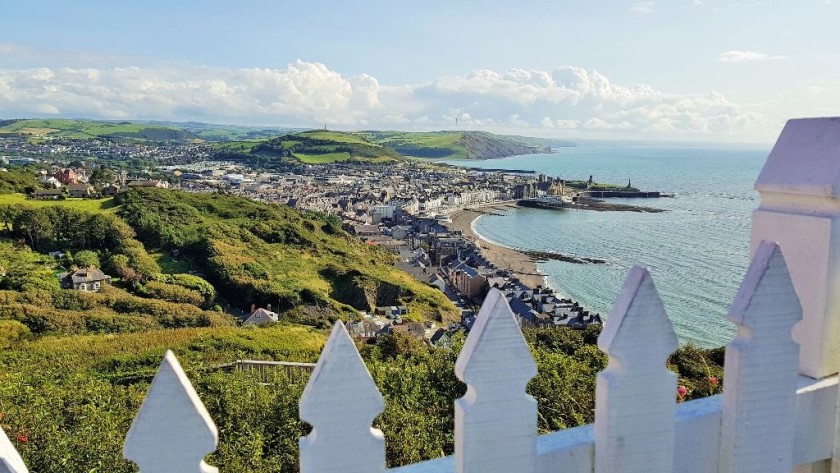
Prior to the ceremony Charles received schooling in the Welsh language at the University of Aberystwyth, and footage filmed in around this charming coastal town, pictured above, was used in the episode.
In Caernarfon
The investiture itself was staged at the stunning Caernarfon Castle and The Crown was able to make use of the exact same location, plus the TV scenes featuring the town were also filmed in the streets around the castle.
The main station in Caernarfon was closed back in 1970, partially because of the availability of alternative local bus services from nearby Bangor station, which still provide an easy link to the town.
Bangor has direct trains from Birmingham, London and Manchester, which all travel along the North lovely Wales Coast.
Though Caernarfon is still served by trains, as the incredible Welsh Highland Railway and its charming service of steam trains, make use of a station that is a short walk from the castle.
These trains head to Caernarfon on a glorious route from Porthmadog, a town on the Cambrian Coast, where the Welsh Highland Railway shares a station with the equally delightful Ffestiniog Railway.
to the Welsh locations by train
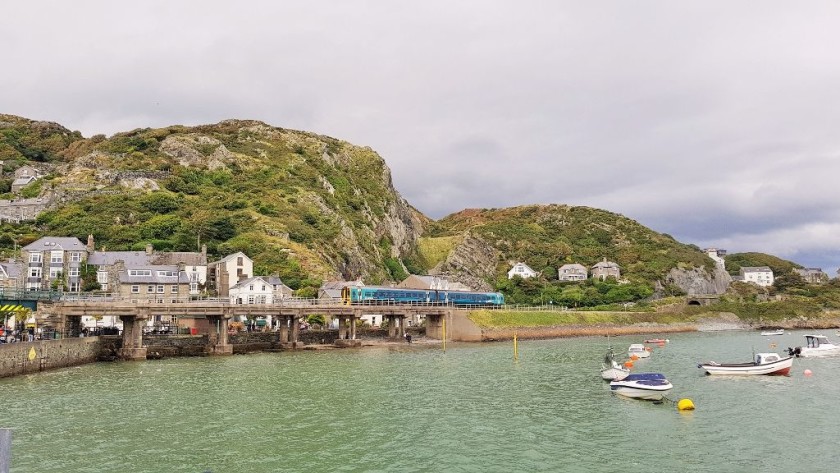
Both Porthmadog and Aberystwyth are served by direct trains from Birmingham, which have straightforward connections with trains from Manchester and London.
These trains from Birmingham also call in Machynlleth and thanks to its junction station, this town is a great base for which to explore the majestic Cambrian Coast by train.
To the stately homes by train
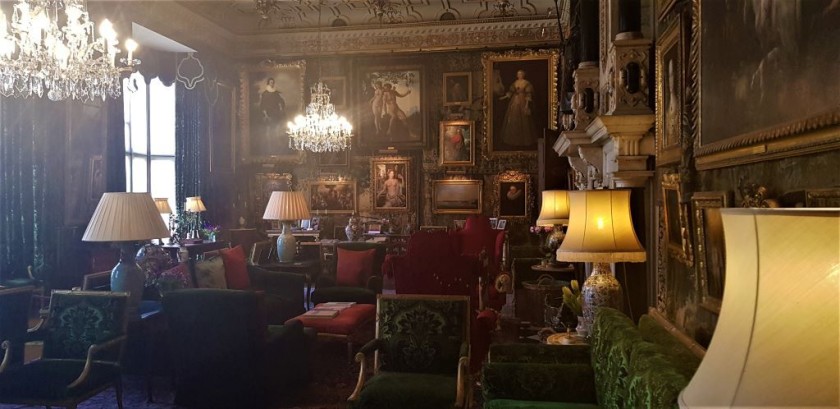

A swathe of England’s greatest houses were used by The Crown’s program makers as substitutes for the interior and garden scenes set in the royal residences.
Wilton House
Those which are generally open to the public and are most easily accessed by a combination of trains and local public transport, include
Wilton House; some rooms in the house, included its Double-Cubed Room, have been used as stand-ins for Buckingham Palace.
It can be reached by taking trains to Salisbury station from Waterloo station in London which have a journey time of less than 90 minutes and typically depart at least hourly.
Delightful Salisbury, which also the location of Britain’s tallest cathedral, also has regular direct trains rom Bristol and Southampton.
No less than five local bus routes, the 3, 8, 25, 26 and 27 all stop close by Salisbury station and then right outside the entrance to Wilton House.
Burghley House
Burghley House has had its interiors and grounds used in multiple episodes in place of Windsor Castle.
It is on the outskirts of the lovely town of Stamford, which has direct trains from Cambridge and Birmingham.
It can also be reached from London in less than 90 minutes with a simple transfer between trains in Peterborough.
Bus routes 201 and 202 connect Stamford station to Burghley’s entrance gates.
Hatfield House
Some of the rooms in Hatfield House have been used to film scenes, which in The Crown were set at Balmoral.
It was also used in season one as the setting for the home of Queen Elizabeth II's grandmother, Queen Mary.
Just 45 minutes after leaving the bustle of central London behind, you can be walking through the tranquil park where the iconic Tudor monarch Elizabeth I played as a child.
The park surrounds the awe-inspiring Hatfield House a Jacobean mansion with royal connections, built beside the substantial remains of the home that King Henry VIII chose as a suitable location for his children to grow up in.
Two trains per hour make the journey from King's Cross in under 30 minutes.
Board the trains, which will be typically heading to Letchworth, and the entrance to the park is literally opposite Hatfield station.
Though the journey planner may direct you to the slower trains which head to Hatfield from both Moorgate and Highbury & Islington - this station has connections with the London Underground and an easy transfer with the Victoria Line.
Same-platform connections are also available at Finsbury Park with Thameslink trains from and to Farringdon, Blackfriars and London Bridge.
Though use the info on the Hatfield House website to plan your visit as the house tends to be open only on Thursday to Sunday, but an additional garden can be viewed on Wednesdays.
The house may seem familiar as it has been used a filming location for the likes of Batman, Shakespeare in Love, Sherlock Holmes, The Favourite, Bridgerton and The Crown.
Before setting off download and print the voucher from the Days Out by National Rail website, in order to obtain two entrance tickets for the price of one.
Though don't put the ticket to Hatfield through the ticket gates, ask the station staff to open it for you, because the utterly charming people in the ticket booth inside the park gates, will need to retain it.
Locations which require a train journey and a country walk
Other houses featured in The Crown require a longer walk from the nearest station, but within the sort of distance that Queen Elizabeth II wouldn’t have thought twice about covering on foot.
Though for those not inclined to share her well-documented love of country walks, local taxis will be available.
Somerleyton Hall
Somerleyton Hall is where, from series three onwards, scenes set at the Royal Family’s traditional Christmas residence of Sandringham, have been filmed.
It is within two miles walk from tranquil Somerleyton station which is located on the railway which connects Norwich to Lowestoft.
Trains typically only travel along this route every other hour, so journeys need to be planned with care, but Norwich typically has two trains per hour from Liverpool Street station in London.
So you can be smelling the roses in the garden at Somerleyton by 1:45 in the afternoon, having not set off from London by train until 10:00.
Audley End House
Since series three, Audley End House which dates from the Jacobean period, has been used as a filming location for interior scenes set in Balmoral.
However, despite the closest railway station taking its name from the mansion, the house and gardens are some distance away, the typical walking time along the country roads is around 45 minutes.
Though Audley End is an easy rail journey thanks to two direct trains per hour from both Cambridge and London, the journey time from Liverpool Street station is just over an hour.
To the cathedrals by train
Some of The Crown’s most stunning filming locations are the cathedrals which were used as substitutes for St Paul’s and Westminster Abbey, which have hosted the state weddings and funerals that have had to be included in the TV series.
Ely cathedral
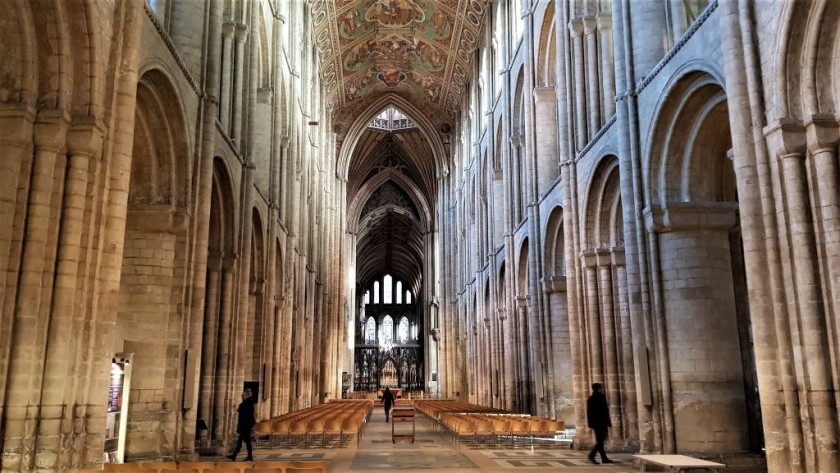
The program opted to use two of the most stunning of Britain’s 42 cathedrals for some of the most spectacular sequences in The Crown.
Gorgeous Ely Cathedral is where the wedding of Queen Elizabeth II and The Duke Of Edinburgh was staged and following in the actors footsteps is easily achievable on a day out by train.
The cathedral is a 15 minute walk from Ely station, which has one or two trains per hour from King’s Cross station in London on a journey which takes less than 70 minutes.
Ely station also has frequent trains from Birmingham, Cambridge and Norwich.
Winchester cathedral
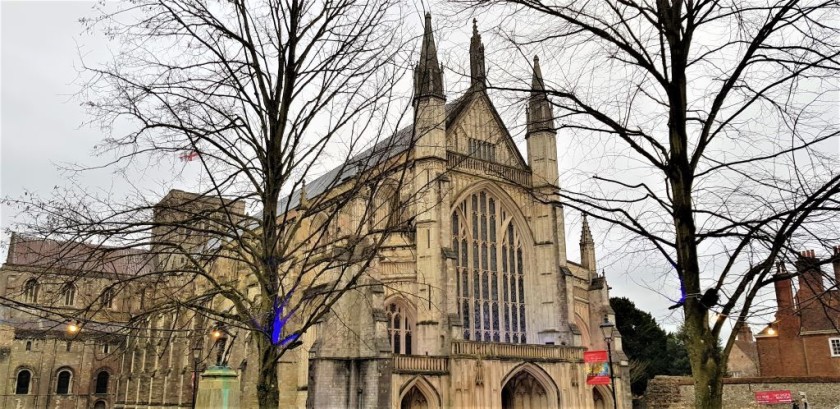
The Crown has made repeat visits to Winchester cathedral in order to film recreations of Winston Churchill’s funeral in series one and for the wedding of Prince Charles and Lady Diana Spencer in series four.
This stunning location, in one of England’s most historic cities, is an easy walk from Winchester station, which is served by two trains per hour from Waterloo station in London, on a journey which takes around 1hr 15 minutes.
The Crown locations by stations in outer London and Kent
In addition to some on street scenes, which were mainly filmed in and around the Mayfair area, another location in the capital used by the program makers was Southwark Cathedral, as the funeral of King Gerorge VI was staged there.
It is located across the street from London Bridge station, which offers easy access by train to multiple other filming locations used by The Crown in the London area.
in Eltham
Eltham Palace has been used a substitute for multiple interiors featured in series one including the Queen’s cabin on the Royal Yacht Britannia and her meeting with Norman Hartnell, the designer of her wedding dress and coronation gown.
Those with an interest in royal history will be able to experience the palace’s preserved 15th century Tudor Hall, which was the largest room within the childhood home of King Henry VIII.
The palace is within a 15 min walk of both Eltham and Mottingham stations, both of which are an easy train journey from London Bridge, Waterloo East and Charing Cross stations.
in Greenwich
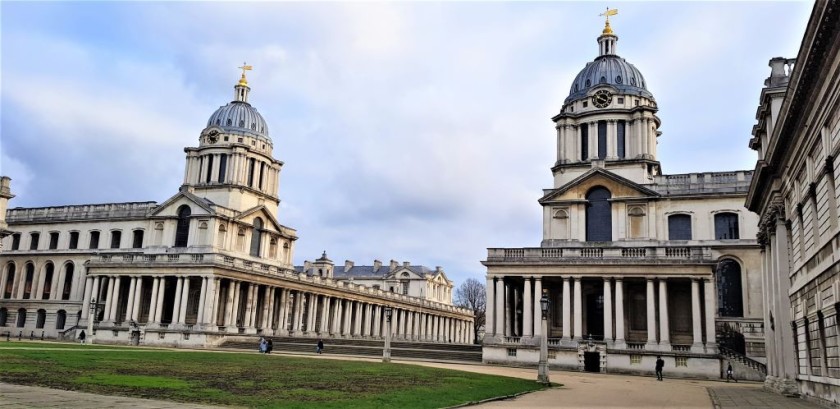
Trains from London Bridge take less than 10 minutes to reach Greenwich which is where the Old Royal Naval College can be found.
It’s fantastic painted hall was used by The Crown as setting for the scene in series five which recreated the official celebration of The Queen’s 40th Jubilee, while the exterior has been used on more than one occasion for scenes set in the courtyards of Buckingham Palace.
in Chatham
In addition to taking a train from London Bridge it’s possible to board trains heading to Greenwich at St Pancras, Farringdon and Blackfriars stations.
These trains continue beyond Greenwich to Chatham, the location of The Historic Dockyard which was used in series five for the scenes in which the Queen boarded and then visited a recreation of the Royal Yacht Britannia.
To the actual royal locations by train
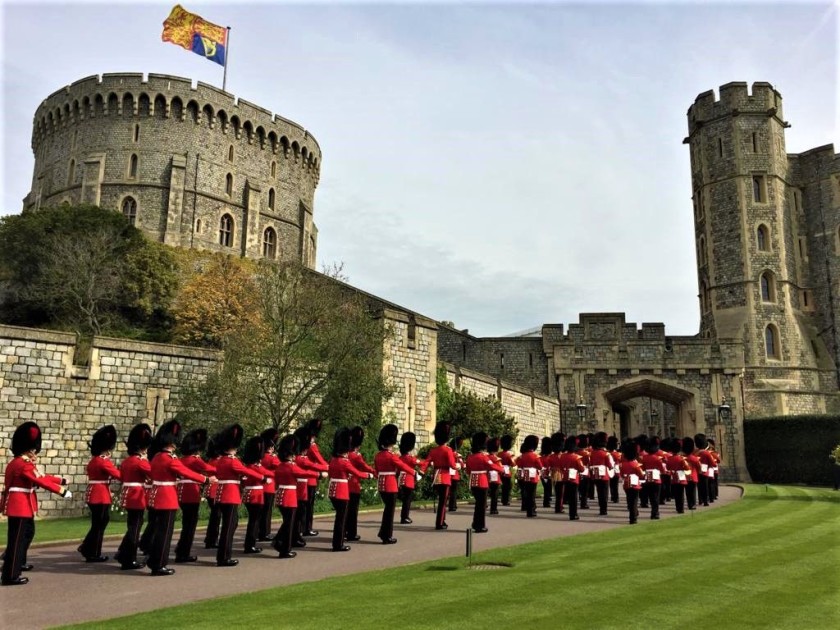
The Royal Yacht Britannia is one of the many locations open to the public which can be easily accessed by train that have been, or are in many cases, still used by The Royal Family,.
It can be found in the Scottish capital Edinburgh, where the wonderfully located Waverley station is within a 15 minute walk of Holyrood Palace, which is now King Charles III’s official Scottish residence.
Edinburgh is an easy and spectacular journey from London by train.
Windsor Castle, is within easy walking distance of two stations, Windsor and Eton Riverside typically has two trains per hour from London Waterloo, while the town’s Central station is a one-stop-hop away from Slough, which is now appropriately served by the Elizabeth line.
Sandringham Estate is within easy reach of Kings Lynn station, hence the Royal Family often take the regular trains which travel there once or twice per hour from King’s Cross station.
Bus route 35 leaves at least hourly from the town’s bus station, which is within a 5 minute flat walk of Kings Lynn railway station, and the bus stops by Sandringham’s tea rooms.
To other locations including those used in the Harry Potter films
Using Data from IMDb, Omio has combined popular travel destinations with filming locations into one interactive map to help inform those that love travel to do both.
The map covers the whole of Europe and shows all outdoor filming locations as of April 2022. It shows the 100 most popular films and 40 most popular series. The films and series are divided into categories based on their genre and can be displayed separately on the map.
Plus there are itinerary ideas for visiting the locations used in the Harry Potter movies.

Simon Harper
I wanted to share my passion for train travel and explain how anyone can take the fantastic journeys I have taken.

This is one of more than 100 train travel guides available on ShowMeTheJourney, which will make it easier to take the train journeys you want or need to make. As always, all images were captured on trips taken by ShowMeTheJourney.
This second version of ShowMeTheJourney is exciting and new, so we are genuinely thrilled that you are here and reading this, but we also need your help.
We’re striving not to let anything get in the way of providing the most useful service possible, hence a facility has been set up with DonorBox which can be used to support the running costs and make improvements.
Instead of advertising or paywalls, your financial support will make a positive difference to delivering an enhanced service, as there’s a lot of ideas which we want to make happen.
So if you have found the info provided here to be useful, please consider saying thank you.


